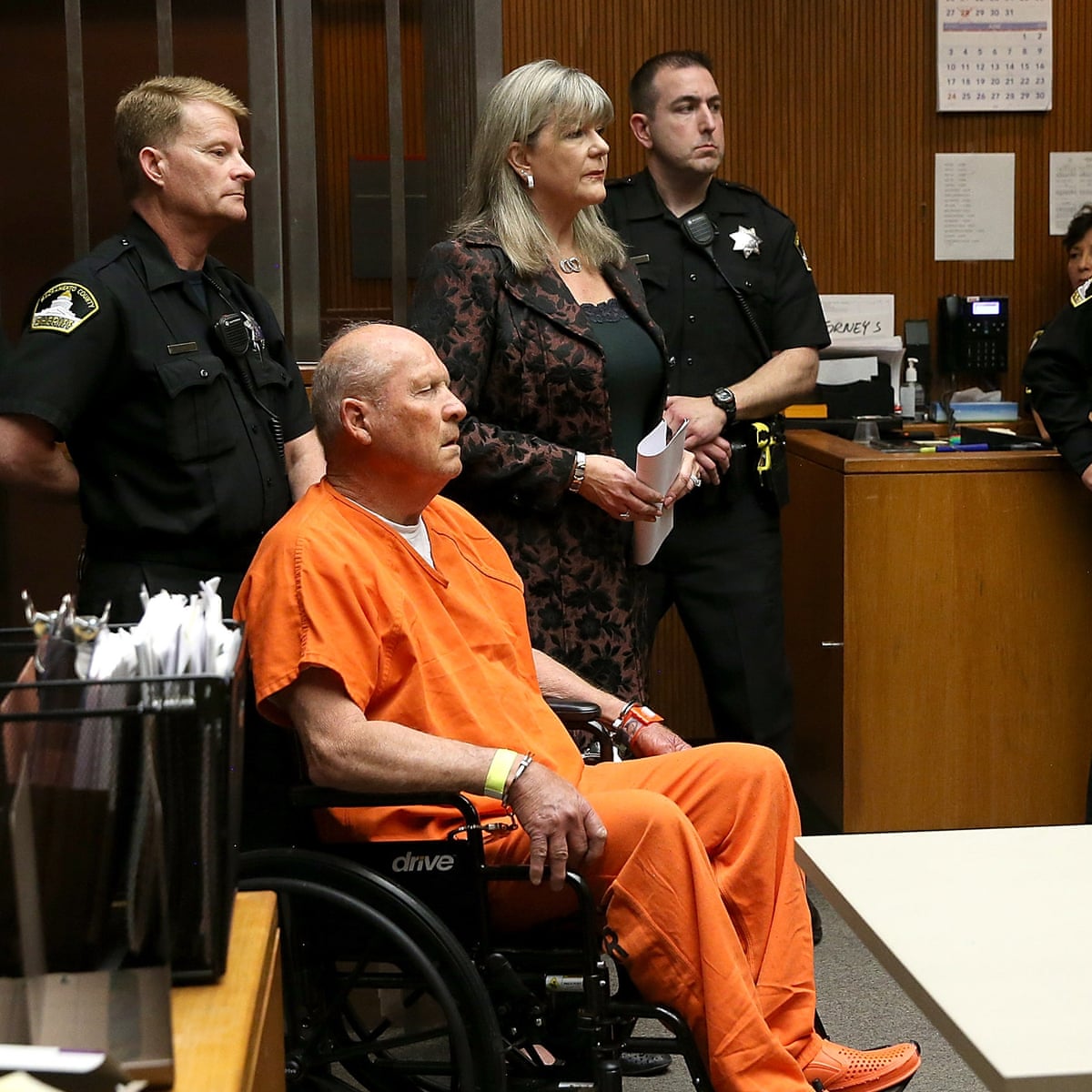Jan 04, 2021 The United States has been home to some of the worst serial killers in human history. These American serial killers have some of the highest number of victims in history, arguably making them the scariest human beings on the planet. Although there are many other prolific serial killers throughout. Serial killer Richard Ramirez was 53 when he died of natural causes on June 7 2013 in a Marin County hospital near San Quentin State Prison, where he had been serving a life sentence on death row. In 1989 a Los Angeles County Superior Court jury found Ramirez guilty of 13 murders and another 30 counts of attempted murder, rape, sodomy, and burglary that he had committed.
What do Jack the Ripper, serial killers, terrorists, bumblebees, invasive algae, and great white sharks have in common?
High-profile cases Rossmo worked on include the Beltway Sniper, the Zodiac Killer, and the Golden State Killer. “The last five years I was with the Vancouver Police Department, all I did was work on unsolved cases, probably a few hundred,” Rossmo says. “You don’t solve any case with geographic profiling. Detectives working on it solve it. Gesche Gottfried Gottfried was a German serial killer who was the last person publicly executed in the city of Bremen. She killed 15 people using arsenic, probably between the years 1813 and 1827. She would mix the poison in with her victims’ food while caring for them as a nurse, reports New York Daily News. A serial killer is typically a person who murders three or more people, in two or more separate events over a period of time, for primarily psychological reasons. There are gaps of time between the killings, which may range from a few days to months, or many years.
Their home turfs can be pinpointed by a criminal investigative technique pioneered by Dr. Kim Rossmo, University Endowed Chair in Criminology and director of the Center for Geospatial Intelligence and Investigation in the School of Criminal Justice.
While a police officer in Vancouver, Canada, Rossmo’s work toward a doctorate in criminology at Simon Fraser University resulted in a dissertation on a new methodology called geographic profiling. It uses locations of serial crimes to determine the area where the perpetrator lives and incorporates mapping software based on a computer algorithm to help detectives greatly narrow the list of suspects.
After he founded a geographic profiling section at the Vancouver Police Department, Rossmo used the methodology in 1998 to determine that a serial killer was behind cases of missing sex trade workers. A conviction followed in 2002.
He ended up getting several patents and developing analysis software that helped solve thousands of crimes around the world. High-profile cases Rossmo worked on include the Beltway Sniper, the Zodiac Killer, and the Golden State Killer.
“The last five years I was with the Vancouver Police Department, all I did was work on unsolved cases, probably a few hundred,” Rossmo says. “You don’t solve any case with geographic profiling. Detectives working on it solve it. Geographic profiling just provides a piece of the puzzle.”
The method can be applied to such serial criminals as rapists, arsonists, bombers, kidnappers, and burglars. Word spread of the successful application of geographic profiling. “People asked for help in this case and that case. People from the United States, Canada, and the United Kingdom wanted to have police officers trained,” Rossmo says. “Officers from China, South Africa, the Netherlands, Sweden, and other European countries have been trained in the methodology.
High Profile Serial Killer Cases In America
“It’s very satisfying to know that your work is not going to just sit on a library shelf. On the other hand, it creates a standard for yourself — you want to keep doing stuff that is useful.”
Rossmo joined Texas State University as a research professor in 2003, after serving as research director at the Police Foundation in Washington, D.C.
“We did a lot of research for the intelligence community and the military, especially when so much was going on in Iraq and Afghanistan,” he says. “Some of the military people deployed were in the Reserves and employed in law enforcement. They contacted me to help with IEDs (improvised explosive devices) and other attacks, and we ended up getting a number of grants.” Rossmo’s research money from a variety of U.S. and overseas sources totals $3.76 million.
Rossmo also supervises graduate students, including some who receive funds from working on the projects and use the research as the basis for publishing or their dissertations. His students have pursued careers in academia, law enforcement, and intelligence.
Consulted, interviewed, and appearing in numerous media and entertainment outlets, Rossmo’s credits include the film Zodiac, the television show “Numb3rs,” and a recent book, The Hunt for the 60s’ Ripper (Mirror Books, 2017), by London-based writer Robin Jarossi, about a serial killer in London with parallels to the Jack the Ripper. In 2014, Rossmo focused on the original Ripper, using data from original police investigations to pinpoint the street where the Ripper lived while terrorizing London in 1888.
Geographic profiling has also spread to zoology and biology when Rossmo was asked to investigate the hunting patterns of great white sharks off Africa, the foraging behavior of bats and bumblebees, invasive species of algae in the Mediterranean Sea, malaria breeding pools, and infectious diseases.
“It’s really exciting when you see your work applied in other disciplines,” he says. “It doesn’t happen that often in criminology.”
Rossmo’s dozens of awards and honors include the Western Society of Criminology’s 2018-2019 Paul Tappan Award. Much of his current research is focused on criminal investigative failures, including those that remain unsolved or result in wrongful convictions. While Rossmo does not know where geographic profiling will lead next, he has a clue.
“The latest thing I’ve heard is a query from scientists in Malta. They want to apply geographic profiling to crowdsourced reports of earthquakes and tremors,” he says. “Those reports come in quickly, faster than with sensors, and will provide real-time data for analysis.”
Then Rossmo can add seismology to his earthshaking list. ✪
Gary Ray Bowles (b. January 25, 1962) was an American serial killer who was sentenced to death for the murder of six men.
Early life
 Bowles was born in Clifton Forge, Virginia. His father, William Franklin Bowles, had died six months before, and his mother, Frances, remarried several times. Bowles was abused by his second stepfather, a violent alcoholic who also abused Bowles' mother and older brother. The abuse continued until, at the age of 13, Bowles fought back and severely injured his stepfather. He left home soon after, angered by his mother's decision to remain in the marriage. He was homeless for the next few years, earning money as a prostitute.In 1982, he was arrested for beating and sexually assaulting his girlfriend, and was sentenced to six years in prison. In 1991, after his release from prison, he was convicted of unarmed robbery in the theft of an elderly woman's purse, a crime for which he was sentenced to four more years in prison; he was released in two.
Bowles was born in Clifton Forge, Virginia. His father, William Franklin Bowles, had died six months before, and his mother, Frances, remarried several times. Bowles was abused by his second stepfather, a violent alcoholic who also abused Bowles' mother and older brother. The abuse continued until, at the age of 13, Bowles fought back and severely injured his stepfather. He left home soon after, angered by his mother's decision to remain in the marriage. He was homeless for the next few years, earning money as a prostitute.In 1982, he was arrested for beating and sexually assaulting his girlfriend, and was sentenced to six years in prison. In 1991, after his release from prison, he was convicted of unarmed robbery in the theft of an elderly woman's purse, a crime for which he was sentenced to four more years in prison; he was released in two.
Murders
On April 14, 1994, in Daytona, Florida, Bowles killed his first known victim, John Hardy Roberts, who had offered him a temporary place to live. Following an argument, Bowles beat and strangled him to death, and then stole his credit card. Police soon considered him a suspect after finding his fingerprints and probation records at the crime scene.
Over the next six months, Bowles murdered five other men in Nassau County, Florida, Savannah, Georgia, and Montgomery County, Maryland. His typical modus operandi was to prostitute himself to his victims before beating and strangling them, and stealing their credit cards.
While on the run, Bowles was put on the FBI's list of the country's 10 Most Wanted Fugitives for his four known victims. Finally, on October 22, 1994, Bowles was arrested for the murder of Walter Jamelle 'Jay' Hinton, and confessed to all six murders.
Javed Iqbal
TrialBowles was found guilty of three counts of murder and sentenced to death, but the sentence was reversed by the Florida Supreme Court; he was given a new sentencing hearing, and again received the death penalty.